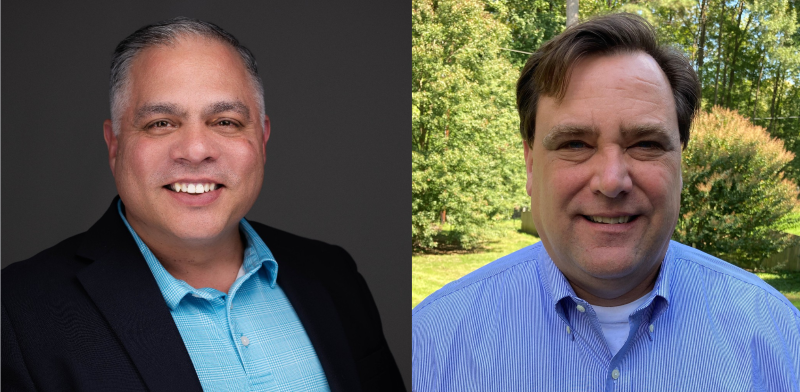Dell: We’ll Stick To Managing Smartphones, Not Making Them
Originally posted by Scott Campbell, CRN.com on Dec. 12, 2012
It’s a mobile world and Dell is ready to arm users with a slew of Windows 8 tablets, but it won’t get back into the smartphone business, Dell President and Chief Commercial Officer Steve Felice told CRN.
“We’re completely out of that. Our view is that from a pure hardware standpoint, the profit pool is not really sufficient to have too many players in it,” Felice said of the smartphone business at Dell World in Austin, Texas, Wednesday.
There will be three or four primary phone providers, and the bigger opportunity will be around managing those devices in a corporate environment because most commercial customers are not going to be able to control which smartphones come into the environment, Felice said.
“What’s more important to [enterprises] is how to control the data that comes in, make it secure and have applications properly interact with smartphones. We’ve developed a strategy that is more software-based that we can represent to our commercial clients,” Felice said.
[highlight type=”one”]Bob Venero, a solution provider attending the conference, said the decision to focus is a good one for Dell.[/highlight]
[highlight type=”one”]”It’s a great strategy on their part. Why do they want to make another ‘me too’ product? It’s a smart plan to focus on the enterprise and the data center,” said Venero, president of solution provider Future Tech Enterprise, Holbrook, N.Y. “I give them kudos for knowing what to do and what not to do.”[/highlight]
With the advent of BYOD, smartphone makers appear to be more focused on consumers, not on the commercial market, which has created the need for more management solutions around the phone, Felice said.
“BlackBerry was the most commercially focused, but they’ve had some missteps, and they seem to be going in the wrong direction,” he said. “Apple doesn’t spend a lot of time on how to develop a secure manageability environment for corporations. Samsung and Nokia are not spending time on that. That’s what we primarily care about.
“We can create a platform utilizing Kace for device management, Quest [Software] for authentication, SonicWall for security, AppAssure for information backup. We have all these capabilities now to create an environment that keeps it secure and enables a business to separate business use from personal use. It also enables us to control access to information when necessary. When something gets stolen, can you shut off business data going to that device? We can create an ecosystem to plug your smartphone into.”
As Dell looks to get into the mobile management game, establishing relationships with the smartphone makers such as Apple, Samsung or Nokia is not necessary to offer a comprehensive solution, Felice said.
“We’re always interested in relationships. That [lack of relationship] has been more the other side than us. But, it’s not needed. There are enough industry-standard tools out there now. Our Kace product manages in Linux, Windows and Mac environments. It’s not necessary to have these partnerships to enable this to work.”
Meanwhile, Dell’s mobile strategy fits into the company’s larger solutions-oriented picture of building and developing active infrastructures for customers.
“I think the active infrastructure is top of mind. VARs cater to a much wider sales force than a [Hewlett-Packard] or Cisco [Systems] sales force,” Dell’s Felice said. “The solutions we’re bringing to bear are meeting the needs below the Fortune 500. A good example is Cisco pushing a UCS offering through the channel. There’s a certain point where that’s not a cost-effective solution for their customer base. We come out with an active infrastructure that emphasizes scalability, flexibility, a lower footprint, lower power consumption. It’s a great alternative to some of the more proprietary complex solutions out there.
“Marius [Haas, Dell’s president of Enterprise Solutions,] is working hard to take our servers, storage, and put a software layer on top of it that makes the manageability simpler. It creates what we call ‘active.’ It’s one thing to be converged. It’s another to be more dynamic. Cisco’s got this thick solution. They can’t do much to it. HP is at the other end of the spectrum; everything is customized. Then you’ve got us. We use industry-standard technology. You can use different blades, different storage. We’re not telling you to throw out everything you have and start over. I think the channel should really like those kinds of offerings that really don’t want the complexity to make a one-time [solution].”
In that vein, Felice said Dell will continue to reward partners for selling a wider variety of Dell technology as part of its “Better Together” campaign, but it won’t punish VARs for selling competing vendors as part of a solution.
“We can’t dictate what a partner does. We can heavily sell the benefits of our offers and influence partners into doing what we think is the best solution, but ultimately it’s their decision,” Felice said.
Felice also said Dell’s strategy is clearer than that of HP, its biggest rival in many areas. But, Dell hasn’t made a bigger push to win over HP customers or partners after HP announced an $8.8 billion charge related to its Autonomy purchase.
“Our strategy within our company is extraordinarily clear and well aligned. There are no internal debates on what we’re doing. We know where we’re headed. The more we can meet with customers, whether that’s channel partners or end users, and get across a sense of unity and clarity of purpose, that’s probably the best offensive move we can make. HP can’t do that,” Felice said. “[An HP] partner does have to worry about decisions, about rumors that they can’t even stay together as one company.
“What is HP going to have to sell to me a year from now, six months from now? We can go in and consistently talk about where we’re headed as a strategy. That brings a sense of clarity, a sense of comfort. It’s making sure they know where we are and where we are headed.”
Finally, Felice liked the concept of Dell being known as much for its software solutions as its hardware, but he’d rather be known as a solutions company.
“We’re trying to make the hardware, software and services more transparent to the customers. We’re trying to embed a lot of tools in a solution. It’s not doing as much about the specs of a solution as opposed to the outcome of the solutions. We want to be known as much of a software provider, but not specifically separating them as much as Dell as an end-to-end solution provider.”



